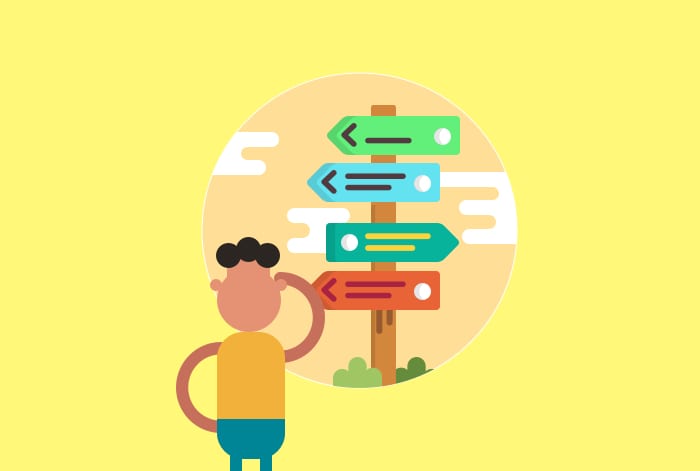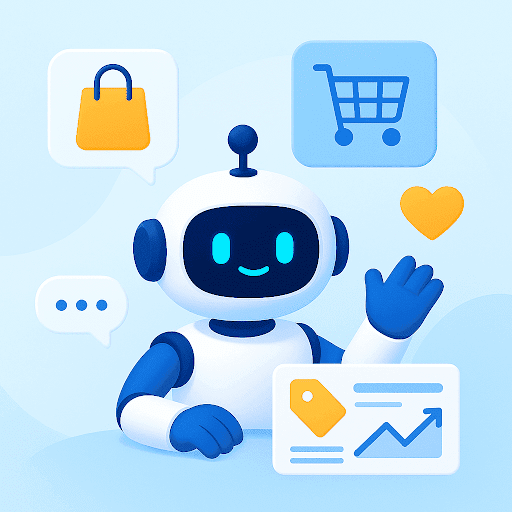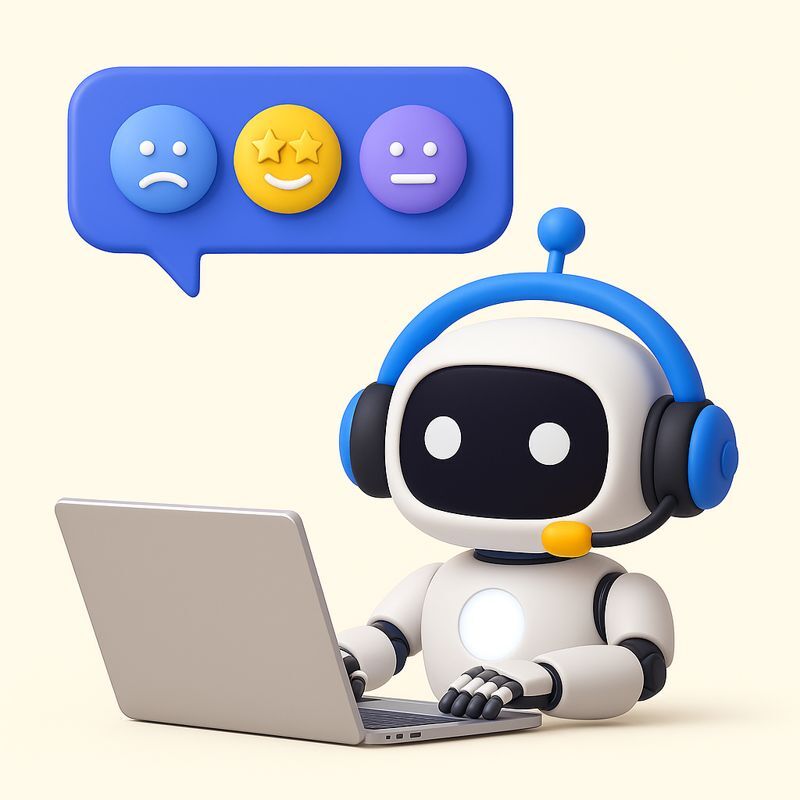Most people stop using a product NOT because it is not useful or does not have the capability to solve their problems. They stop because it takes a lot of effort for them to get used to it.
People want simple products that can solve complex problems. As a SaaS business, this is exactly what you have to deliver.
Unfortunately, not many SaaS businesses have realized this, or have managed to implement it successfully.
40 to 60% of users who sign up for a free trial will use your product once and never come back. Only 2.7% of them would stick around after day 30.
Some customer churn will always happen due to causes or things beyond your control. It’s a problem when new users abandon you. It’s a problem when they don’t even seem to have used the product enough to make a decision.
This is a major red flag. It might indicate that it wasn’t your product that broke the deal – customers sign up for a product only when they’re certain it’ll solve a problem for them. Poor customer onboarding could be the reason they chose to leave.
What is SaaS Customer Onboarding?
SaaS customer onboarding is the process by which a Software as a Service (SaaS) provider guides and assists new customers (users) in adopting and using their product effectively.
It is a critical phase that occurs immediately after a customer subscribes to a SaaS solution. The primary objective of customer onboarding is to ensure a smooth and successful start for new users, helping them understand the software’s features, functionalities, and benefits.
This typically involves providing training, tutorials, account setup assistance, and ongoing support to help users navigate the software and maximize its value.
Effective SaaS customer onboarding is essential for driving user adoption and reducing churn.
HubSpot is a good example of a company that has nailed its SaaS customer onboarding strategy. Users are taken through a customized setup process that is heavily tailored to their business needs and goals. Aside from this, HubSpot’s interactive learning platform – HubSpot Academy – offers a wide range of video tutorials, courses, certifications to help users become proficient in using the software.
Users can also track their progress within the software and even receive recommendations for complete tasks and achieving specific goals.
What is the Importance of Creating A Great SaaS Customer Onboarding Experience?
A great SaaS customer onboarding experience increases the likelihood of users adopting a software product quickly and leveraging it to its full potential. Users who understand how to navigate and leverage the software are more likely to become long-term customers.
Aside from this, there are several other reasons why the SaaS onboarding experience matters:
- Reduced Churn: A positive onboarding experience can significantly reduce customer churn rate. When users feel confident and satisfied with their initial interactions with the software, they are less likely to cancel their subscriptions or seek alternatives.
- Faster Time to Value: Effective onboarding accelerates the time it takes for customers to realize the value of the software. This not only benefits the customer but also helps the SaaS provider demonstrate the product’s ROI quickly.
- Customer Loyalty: A great onboarding experience fosters customer loyalty. When users have a positive first impression and continuously find value in the software, they are more likely to remain loyal, renew subscriptions, and even advocate for the product.
- Competitive Advantage: In a crowded SaaS market, exceptional onboarding can be a competitive differentiator. Potential customers can choose one provider over another based on the quality of the onboarding experience.
You Might Also Like: 15 Engaging Welcome Email Templates for New Customer Onboarding
Best Practices to Create An Effective SaaS Customer Onboarding Experience
Incorporating effective customer onboarding strategies is essential for the success of SaaS app development, fostering user satisfaction and long-term engagement.
Below are some best practices you can follow to ensure an exceptional onboarding experience for your SaaS customers.
1. Do Not Overwhelm Your Users
Overwhelming new users during SaaS customer onboarding can be counterproductive for several reasons.
First, it can lead to frustration and a negative initial experience, which may deter users from fully engaging with the software. Additionally, too much information or complex processes can lead to confusion, hindering users’ ability to grasp the core features and benefits of the software.
It’s crucial to strike a balance between providing essential information and features without overwhelming users, as a gradual and user-centric approach encourages better comprehension, user adoption, and a more positive onboarding experience.
How to Ensure You Don’t Overwhelm New Users
- Focus on Core Features First
Introducing all of your product’s features at once can create a cognitive load that hinders users from grasping core functionalities. It’s essential to prioritize and introduce features gradually, focusing on what’s most relevant to users’ immediate needs and allowing them to build competence and confidence over time.
Design a customer onboarding process that directs new users to your core features first. Tell them how it works. Point them to use-cases. Re-affirm their purchase decision.
Always keep complexities for later. Let users get used to the product first.
The content marketing tool, Sniply, follows a neat approach. Their onboarding process is designed to help users create their first Snip (which is their core feature) – a subtle call-to-action that you can add to every page you share. That’s that. That’s all it does.
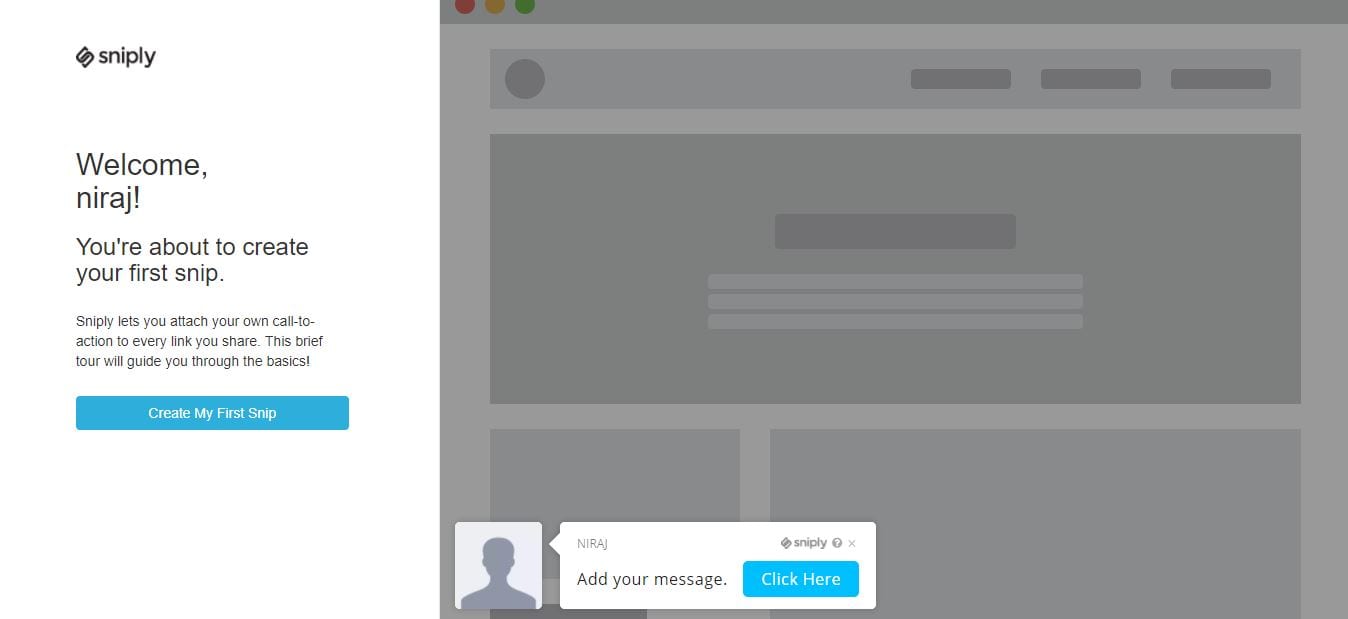
Keep it simple. The lesser, the better.
2. Build More Stages with Less Steps to Execute
As opposed to popular belief, an overload of instructions and pop-ups do not really make things easy for anyone. All it does is cause distraction.
For all you know, the user would postpone the sign-up process to a more convenient time, which indirectly amounts to a loss of interest.
Take it easy. Build more steps and deliver a better user experience. Do not overcrowd a screen.
The popular communication tool, Slack, does a great job at this by highlighting one feature at a time and fading the rest.
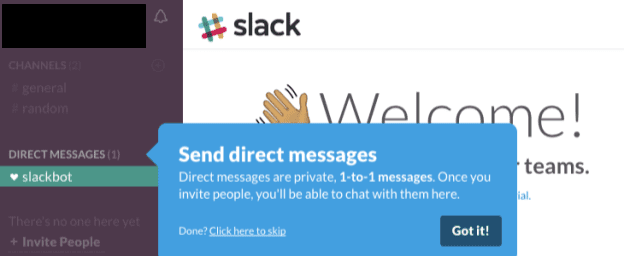
On the same lines, here are a few things you should never do:
- Unnecessary information fields in the registration form. Make sure it can be completed in 2-3 clicks.
- Email newsletter subscription pop-ups during the first few runs. Let them read the blog first.
- Asking for a review during the first few runs. Let them use it for a month at least.
- Asking a new user to update to a new version immediately after signing up. Let them like the present one.
- Not letting them skip a few steps. Respect their time!
2. Start Collecting Feedback from the Get Go
Collecting feedback at the beginning of the onboarding process helps identify any issues or roadblocks that users may encounter. Addressing these issues promptly prevents frustration and ensures a smoother onboarding experience.
Things to Keep in Mind When Collecting Feedback
- Ask Pertinent Questions
- If a customer hasn’t completed the onboarding process, find out why:
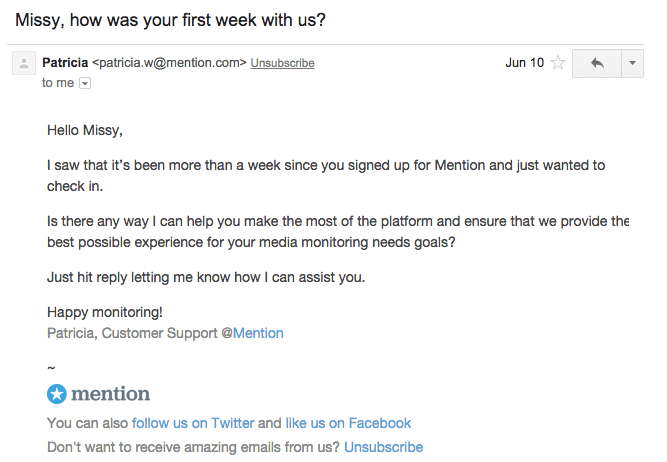
- If they have completed it, send them a quick survey:

- If they’re a big customer you’d love to have, ask if you can call them:

Head over to our post for more on this.
2. Collect Important Data Whenever Possible Without Involving the Customer
- Use Heat maps: They will help you analyze how customers behaved during the onboarding process – the areas they viewed the most, the links they clicked the most, and more. Popular heat map tools: UXCam, Crazyegg, Zarget, Livesession, Hotjar.
- Use Session replay tools: They record and replay how customers interacted with your app. For instance, you’d know how much time customers spend on each section of your onboarding process. Popular session replay tools: LiveSession, MouseFlow, LuckyOrange
- Use Funnel analytics: They track the customer’s progress through different stages of the onboarding process. It will help you identify the areas most customers are getting stuck at. Popular funnel analytics tools: Kissmetrics.com, Mixpanel.com.
- Identify at-risk customers: It is a great way to lower your churn rate. For instance, Kissmetrics’ People Search option helps you identify users who signed up but never used a particular feature or users who have stopped using your core feature.
3. Tailor Your Customer Onboarding Process
Tailoring your SaaS customer onboarding process is crucial because it recognizes and addresses the unique needs, goals, and preferences of individual customers. By focusing on what’s most relevant to each customer, you can help them realize the maximum value from your SaaS product quickly. This accelerates their time to value.
Aside from this, customizing the onboarding experience prevents overwhelming users with unnecessary information or features, making it more manageable and user-friendly.
How to Tailor Your Onboarding Process
- Set-up the Customer Onboarding Process Using the Data Collected In the Previous Step
Most sign-up forms ask for basic user information, such as name, country, role, and company. You can use that data to customize the initial customer experience.
For example, Harvest automatically populates a few vital fields based on your location:
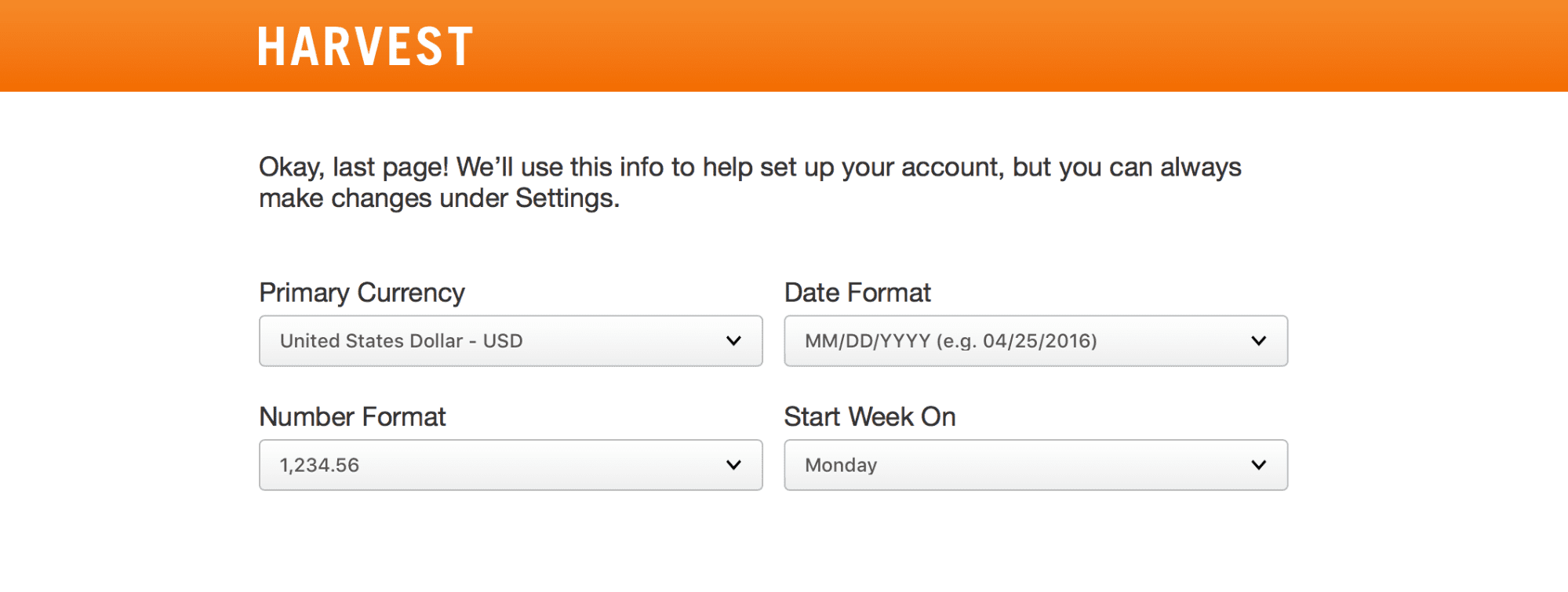
Always remember, the lesser time they spend setting up the account, the faster they will be able to get down to the business.
2. Personalize the Customer Onboarding Process Based on Trends
You can use the available customer data to identify trends relevant to them. It could be based on their location, language, profession, interests, age group, gender, and more. Tailor the user onboarding experience accordingly. This will make it easier for them to relate to the product.
Pinterest is a great example of this. They updated their onboarding process after a lot of new users complained they were getting lost. They came up with a personalization system that identified and displayed popular content based on users’ preferred language or country.
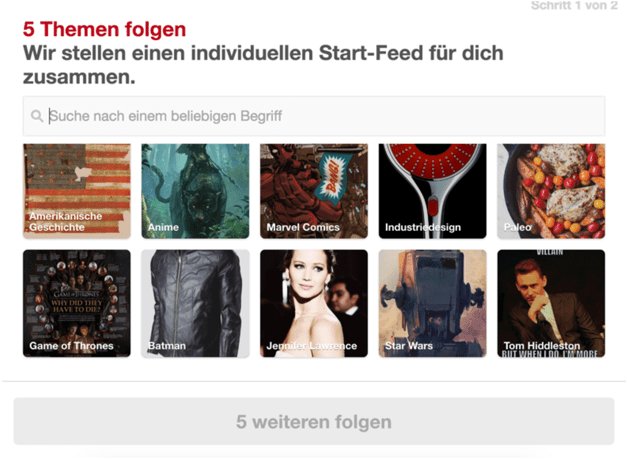
This made it easier for them to connect with the app and move along.
3. Personalize the Customer Onboarding Process Based on their Needs
As we discussed earlier, customers sign up for your product for different reasons. Some might require all of your features, while others may require only one or two.
It is crucial that we understand what they are looking to achieve with our tool. Personalize the customer onboarding experience based on that. This will make it easier for them to reach the ‘aha moment’.
4. Tailor the customer onboarding process based on their level of expertise
For a customer onboarding process to inspire confidence, it has to respect the customer’s level of expertise. Otherwise, they will either start doubting their own ability or the product’s capabilities. You don’t want that, do you?
Prototyping tool, Justinmind, lets users select onboarding flows based on their level of expertise. Users who choose the ‘expert’ mode will be given access to the full user interface immediately. Whereas, users who choose the ‘beginner’ mode will be given an interactive tour of the product with links to their support pages and YouTube tutorials.
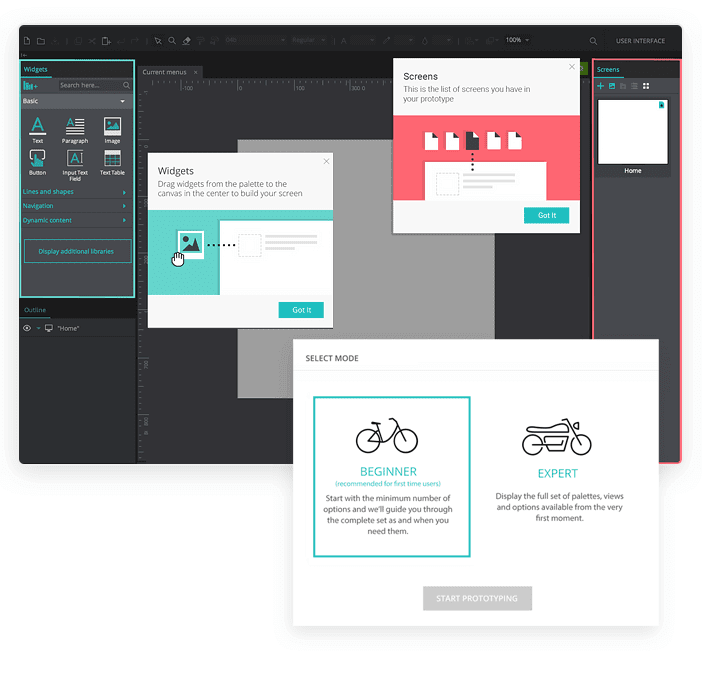
This is a great way to prevent customers from feeling overwhelmed or underwhelmed.
4. Reduce Time to First Success
First success with a SaaS (Software as a Service) product refers to the initial positive outcome or achievement that a user or customer experiences when using the software. It marks the point at which the user derives tangible value or accomplishes a specific goal with the product.
A study suggests that minimizing the time span between a customer’s acquisition of a SaaS product and their first success with that product leads to that customer sticking with the product for the long haul.
The best way to minimize this time span – create a customer onboarding process where every step is designed for success.
How to Create An Onboarding Process Designed for Success
- Focus on Benefits Rather than Users
A customer onboarding process that merely explains the product is as good as a boring monologue. If it doesn’t tell customers what purpose each feature serves or how they will contribute to the ‘first success’, why would they bother to stay?
You can’t expect them to figure out a path to the ‘first success’ on their own. Most customers will deem the product not worth the time and move on.
Instead, tell customers what is in it for them – highlight the benefits and advantages, and give them a glimpse of how they can achieve their first success.
The popular note-taking app, Evernote, does it very well. As you can see from the images below, instead of talking about features, their focus is on what users can achieve with those features.

2. Make it Easier for Customers to Navigate
A good rule of thumb is to keep reminding yourself that nobody is dying to use your product. They just want to get their job done. Even a tiny hint of delay is enough for them to jump ship.
Don’t compromise your customer onboarding program’s navigation for the sake of giving more information. There are already enough roadblocks to overcome to reach the first success. Why make it worse?
Put yourself in the customer’s shoes. Include only what is necessary. Do not force information on them.
Here are a few tips to keep in mind for better navigation:
- Add a progress bar, it helps maintain the momentum and discourages customers from aborting midway.
- Don’t make any step mandatory. The customer may not have the time or patience to complete it. Make sure you have ‘skip’ and ‘back’ buttons.
- Give new customers the option to revisit the product tour, or intro tutorials whenever they want. Even after they have started using that particular feature.
- Have explicit direction cues, don’t assume customers will find out how to proceed on their own.
- Don’t make the onboarding flow drastically different from other products in your domain.
- Make sure it is easier for customers to invite friends or teammates. This will also increase their chances of staying.
3. Nudge Them Along Checkpoints
Checkpoints are junctures in the customer onboarding flow where they can achieve something significant. For a Saas product, the first can be ‘finished setting up the account’; the second can be created my first report’, and more.
For example, while creating a shared inbox on Hiver, you can simultaneously invite your team to start using that shared inbox.

Most customers will get stuck at these checkpoints and this is when they need you the most.
- If a customer is taking unusually long to complete a task, send them an email with links to relevant articles from the help section.
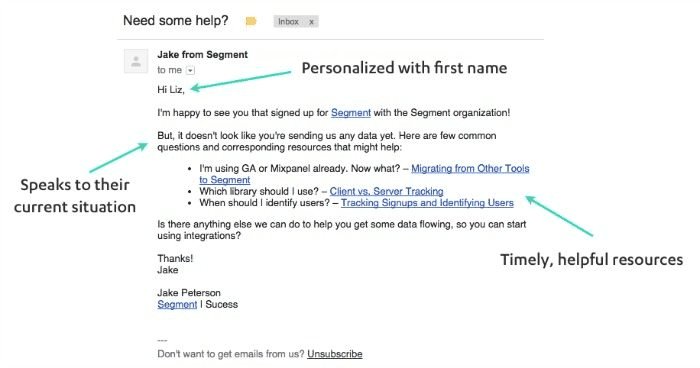
- If a customer stopped using the product after getting stuck at a particular checkpoint, schedule a call to address the problem or invite them to an on-demand training webinar.
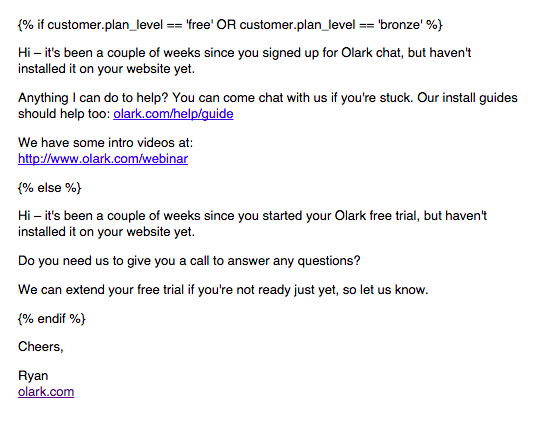
- If a customer completes a checkpoint, send them a congratulatory message. It will give them a sense of accomplishment.
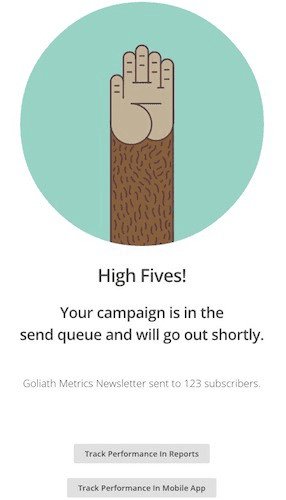
4. Create Content to Make Customer Onboarding Easy
According to a study, 69% of Millennials ‘feel good’ about a company when they can solve a problem on their own. The same study adds that 73% of people would like to solve problems on their own.
To appeal to this section of your audience, create content that will help them solve problems by themselves. It will help them move along in their journey toward first success without too much handholding.
The key here is to make it available to customers at the right time. You can do this via email or in-app messaging.
You can include them in the onboarding UI too. But, don’t force-feed it, instead let them access it only if they want to.
Here are a few different types of content you can create:
- Case-studies: Create case studies based on the existing customers. Then, make it available to new users with similar characteristics. For example, if you have many small accounting firms as customers, create case studies based on how they got more work done with the help of your tool. Then, every time you get a similar customer, you can send the case study to them.
- Self-help channels: Create self-help channels like forums and a knowledge base where people can find answers to their questions or debug issues themselves.
- Use Cases: Create articles or videos about best practices for different use-cases. For example, if a customer uses a particular feature repeatedly, introduce them to its best practices.
- Interactive tutorial content: Trello does a fine job at this. Its onboarding flow gives a clear idea about how it lets you work more collaboratively and get more done. Instead of having pop-ups and push notifications, they have an interactive demo board that is pretty much self-explanatory.
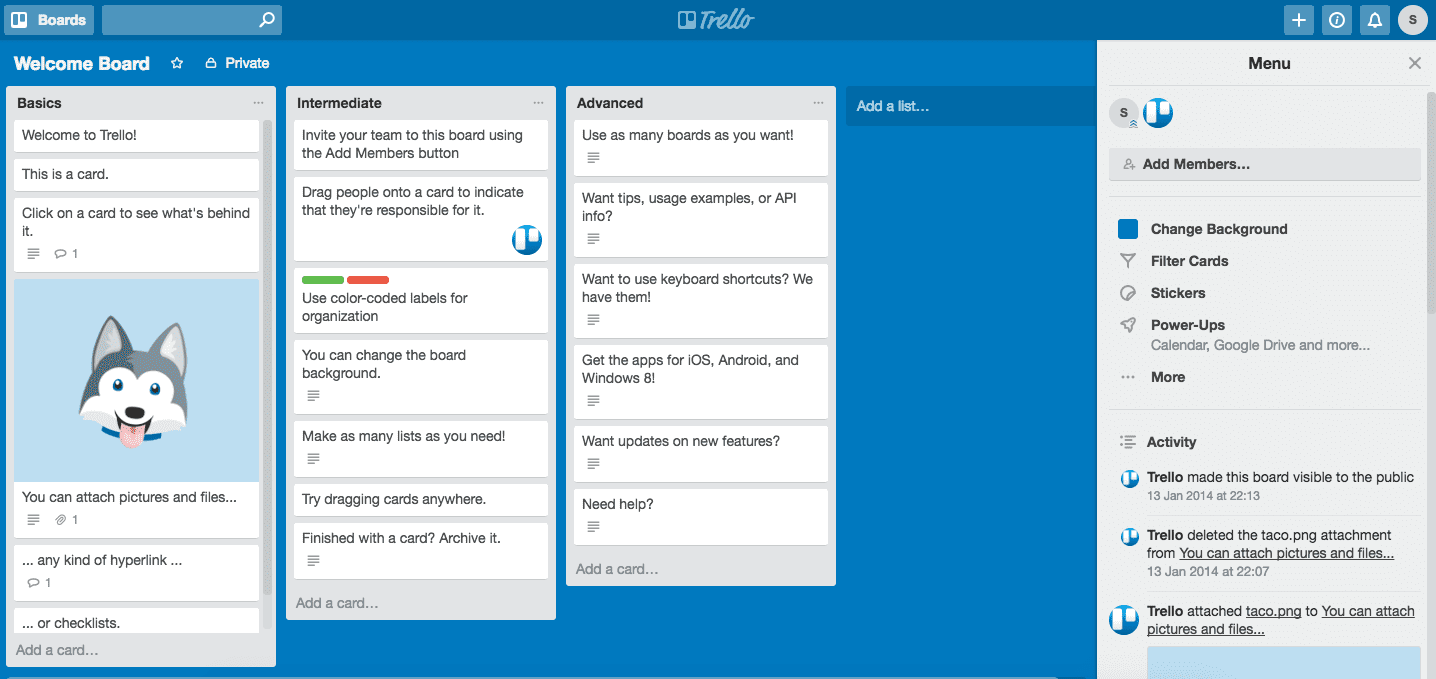
How to Create A Successful SaaS Customer Onboarding Process
Creating a successful SaaS (Software as a Service) customer onboarding process is essential for ensuring that users have a positive and productive experience with your product from the start. Here are the steps you can follow to create an excellent customer onboarding experience.
Understand Your Audience:
- Segment your users based on their needs, roles, and goals.
- Gather insights about your target audience to tailor the onboarding experience.
Set Clear Objectives:
- Define the desired outcomes for users during onboarding.
- Establish specific milestones that users should achieve to consider themselves successfully onboarded.
Map the User Journey:
- Outline the steps users need to take to become proficient with your software.
- Identify potential roadblocks or areas where users may need assistance.
Simplify the Initial Experience:
- Start with a simple, guided tour of the most essential features.
- Avoid overwhelming users with advanced functionalities or extensive information right away.
Interactive Tutorials and Walkthroughs:
- Provide interactive tutorials or guided walkthroughs within the software.
- Use tooltips, tooltips, or overlays to highlight important elements and actions.
Progress Tracking:
- Implement progress tracking features to help users understand their advancement.
- Show users how far they’ve come and what remains in their onboarding journey.
Customer Support:
- Make customer support easily accessible during onboarding.
- Offer multiple support channels, such as live chat, email, or phone support, to assist users with questions or issues.
Feedback Collection:
- Solicit feedback from users throughout the onboarding process.
- Use surveys or feedback forms to gather insights into their experience and areas for improvement.
Segmented Communication:
- Segment your communication based on user progress and behavior.
- Send targeted messages or prompts to users who may need additional guidance or encouragement.
Gamification and Rewards:
- Incorporate gamification elements or rewards to incentivize user engagement and completion of onboarding tasks.
Cross-Platform Consistency:
- Maintain a consistent onboarding experience across different platforms (web, mobile, desktop) to provide a seamless user experience.
Analytics and Iteration:
- Continuously analyze user behavior and feedback to identify bottlenecks and areas for improvement.
- Iterate and refine the onboarding process based on data-driven insights.
Common SaaS Customer Onboarding Mistakes
Customer onboarding in the SaaS industry is crucial for user adoption and long-term success. However, many companies make common mistakes during this process that can hinder user satisfaction and retention. Here are some common SaaS customer onboarding mistakes to avoid:
- One-Size-Fits-All Approach: Treating all users the same during onboarding can be a mistake. Users have different needs and goals, so a personalized approach is more effective.
- Lack of Clear Goals: Failing to define clear onboarding goals and success criteria can lead to a disjointed onboarding process.
- Neglecting Mobile Users: If your SaaS product is accessible on mobile devices, ignoring mobile-friendly onboarding can alienate a significant portion of your user base.
- Complex Language and Jargon: Using technical or industry-specific jargon without explanation can confuse users, especially those who are not familiar with the domain.
- Ignoring Customer Feedback: Neglecting to collect and act on user feedback throughout the onboarding process can result in missed opportunities for improvement.
- Lack of Post-Onboarding Support: Once onboarding is complete, some companies neglect ongoing support, which can leave users feeling abandoned.
- Complex User Interfaces: If your SaaS product has a cluttered or non-intuitive interface, it can make onboarding more challenging and frustrating for users.
- Long, Tedious Onboarding: Dragging out the onboarding process for too long can result in user disengagement and frustration.
- Overlooking Gamification: Gamification elements, such as badges or rewards, can be effective in keeping users engaged during onboarding.
You Might Also Like: The Complete Guide to Customer Success in SaaS
Wrapping up: Effective customer onboarding is the foundation of a lasting relationship
Customers are humans with actual problems. They don’t have the time or the patience for an elaborate customer onboarding process. The reality is that they just want to complete it as fast as possible, start using the product and get it to solve their problems.
When the relationship is so fragile, every second of attention you get is precious. Make good use of it. Keep things simple and easy to understand, and of course, avoid the above-mentioned mistakes.
Related post: 4 checklists to perfect your client onboarding process
 Skip to content
Skip to content



